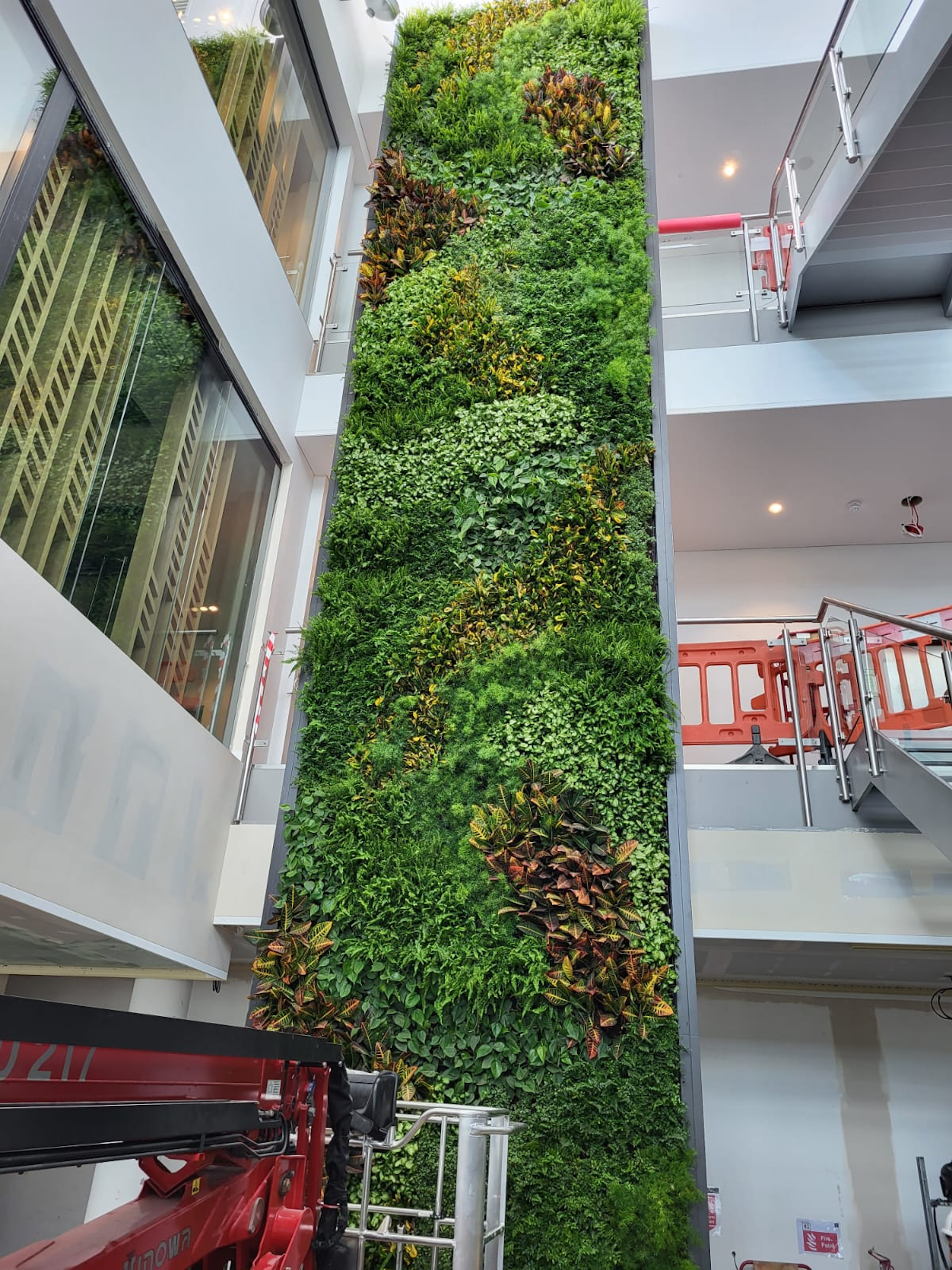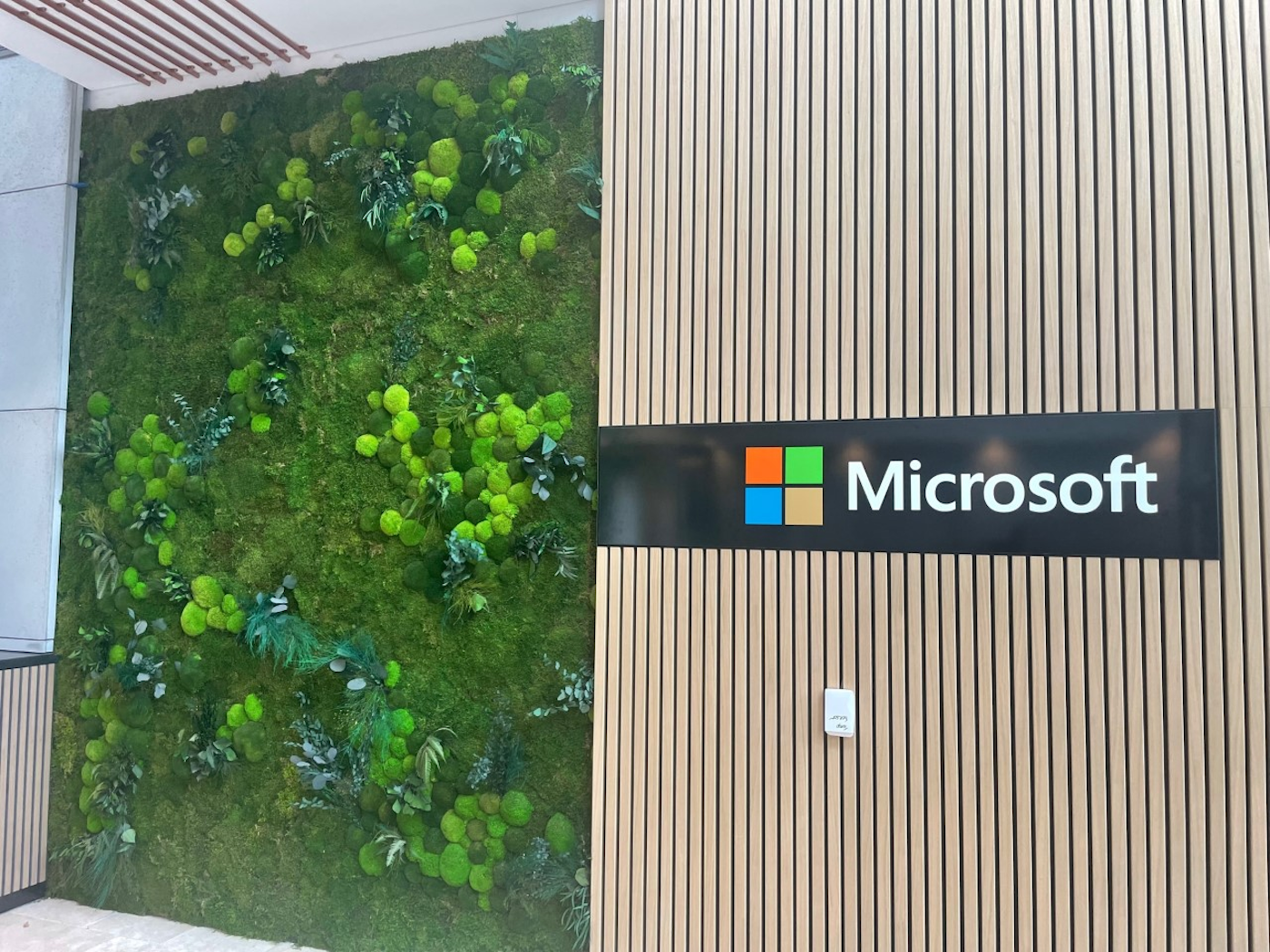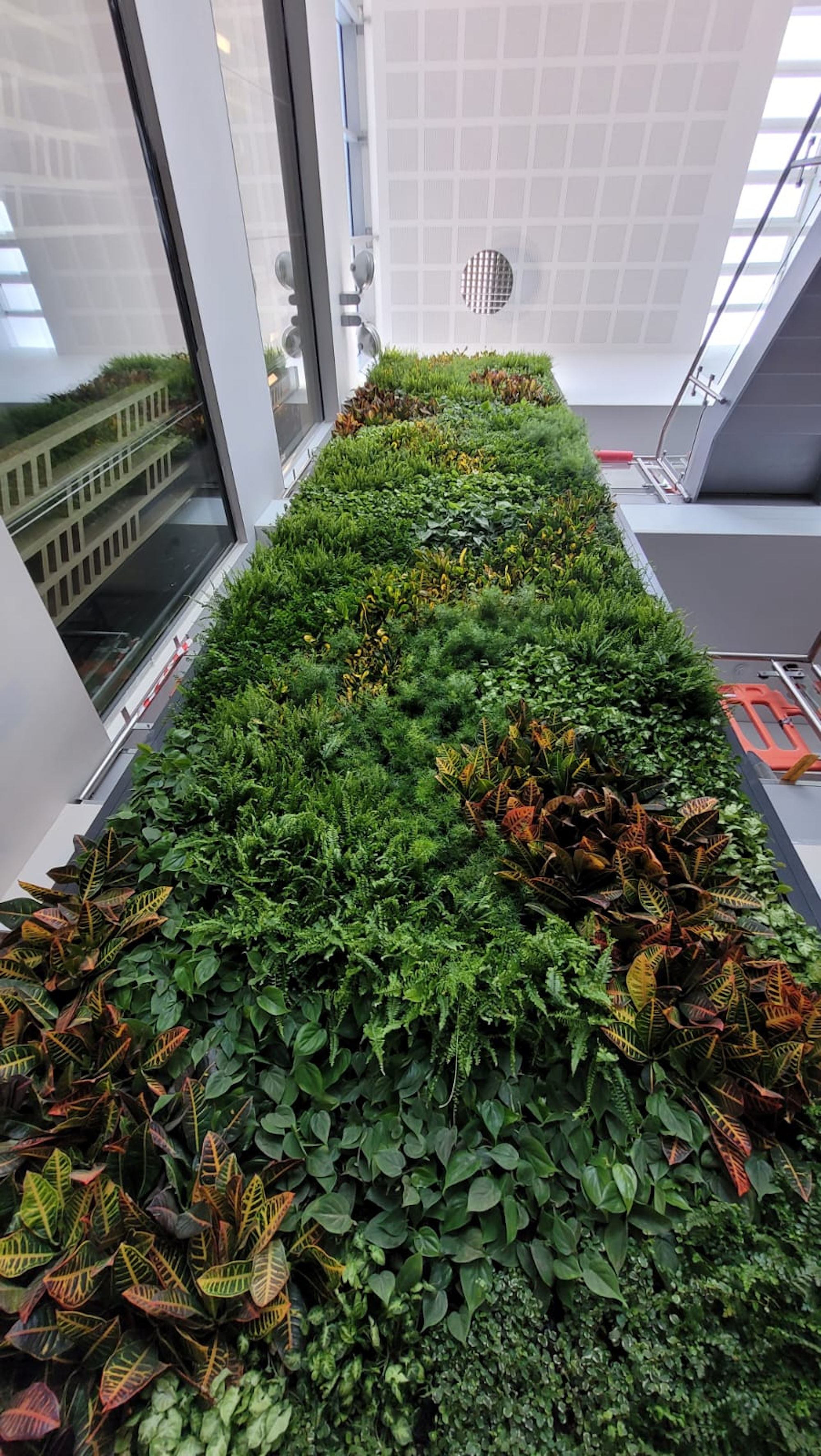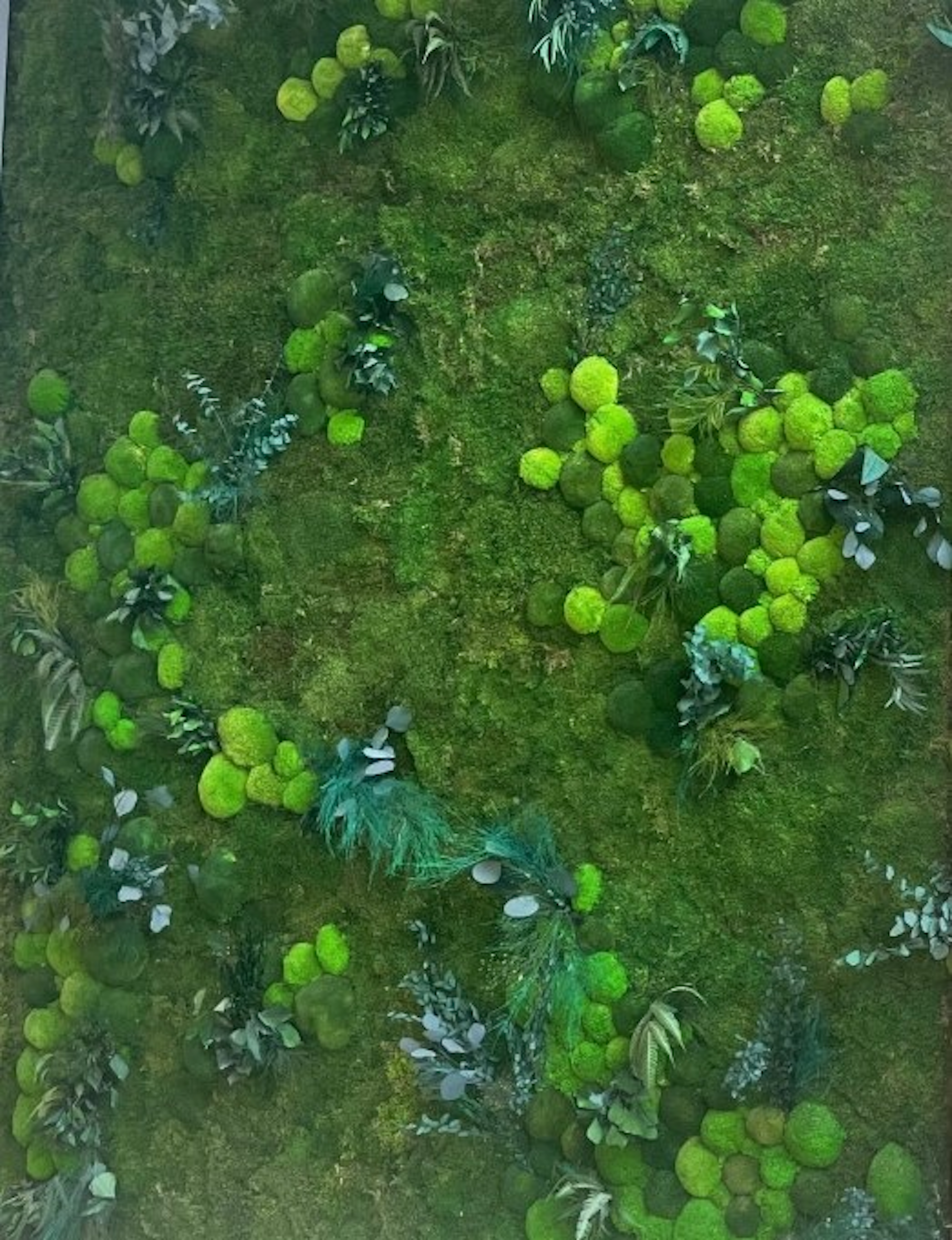Project Background
The living wall at Microsoft Cambridge was designed with biophilic response in mind. Standing at an impressive 11m high, this 33 square metre living wall has made a huge difference to the space!
Size
- 33m²
Project Drivers
Biophilia
Social Impact



